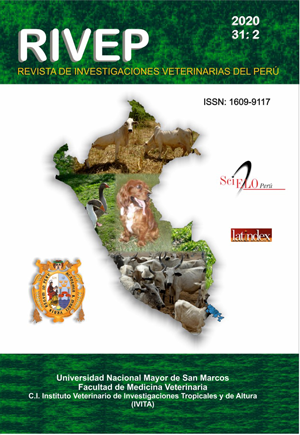Cephalic heterochronies in domestic rabbits
A first study
DOI:
https://doi.org/10.15381/rivep.v31i2.16178Keywords:
gerontomorphy, lagomorpha, Oryctolagus cuniculus, paedomorphyAbstract
Heterochrony is defined as the evolutionary changes in the timing of development, presenting a unified view of neoteny, recapitulation, paedogenesis, retardation, progenesis, etc. In order to detect processes of heterochrony and differentiate them, 291 fresh corpses of domestic rabbits of different purposes ("belier" type n=73, "toy" type n=112, meat type n=71) were studied, from which facial and cephalic lengths were obtained, and compared them with 35 wild rabbits (Oryctolagus cuniculus). The regression lines of facial length versus the cranial length appeared homogeneous among types, but slopes showed statistically different values and, in all cases, allometric coefficients exceeding 1. This would be interpreted as a clear expression of hypomorphoses for toy rabbits (slope was lower than that for wilds), but hypermorphosis for meat animals (slope was higher than that for wilds). Wild rabbit, on the other hand, presented a development with a sudden stop, due to their lower body weight and hence shorter cephalic growth.
Downloads
Downloads
Published
Issue
Section
License
Copyright (c) 2020 Pere M. Parés-Casanova, Khalil Sofiane, Anabel Medina

This work is licensed under a Creative Commons Attribution-NonCommercial-ShareAlike 4.0 International License.
AUTHORS RETAIN THEIR RIGHTS:
a. Authors retain their trade mark rights and patent, and also on any process or procedure described in the article.
b. Authors retain their right to share, copy, distribute, perform and publicly communicate their article (eg, to place their article in an institutional repository or publish it in a book), with an acknowledgment of its initial publication in the Revista de Investigaciones Veterinarias del Perú (RIVEP).
c. Authors retain theirs right to make a subsequent publication of their work, to use the article or any part thereof (eg a compilation of his papers, lecture notes, thesis, or a book), always indicating the source of publication (the originator of the work, journal, volume, number and date).










